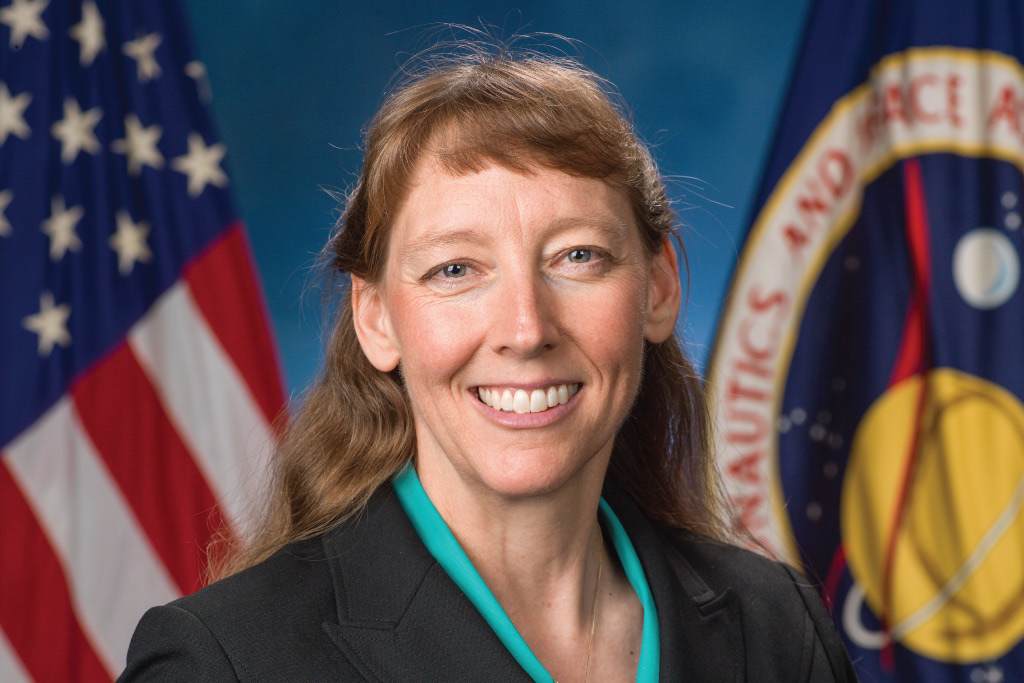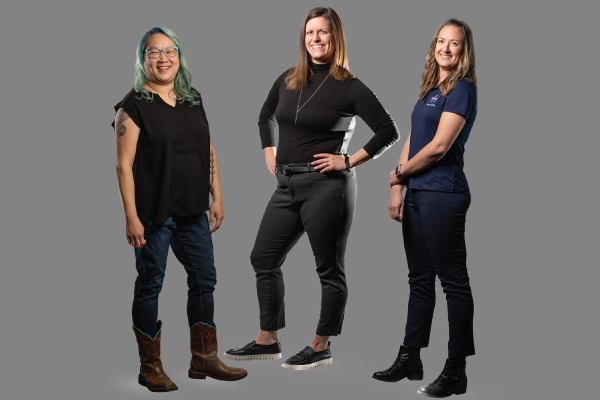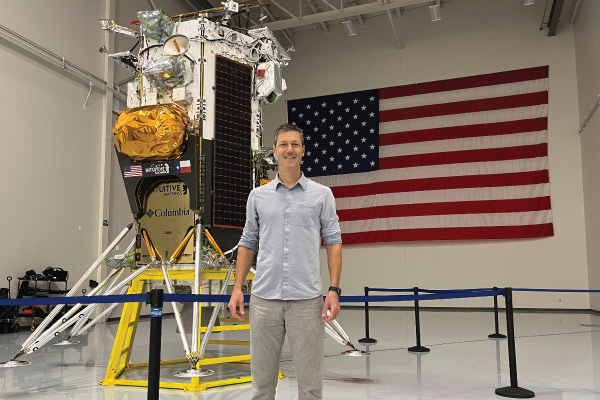Suited for Mission
At NASA, Amy Ross, ’06, turns a legacy of exploration into the next generation of spacesuit design.
Amy Ross, ’06, had been at NASA for more than a decade when she decided to return to school. As the daughter of an astronaut, she had a space education growing up.
“I've been to Kitty Hawk. I’ve been to the golf course in Massachusetts where Goddard launched his first liquid-fueled rocket,” she said. “I’d done these things; I’d been to these places, but it was always kind of in bits and pieces, and nobody laid it out in logical order.”
At UND, the pieces started coming together. Her coursework in space studies deepened her technical understanding of Mars exploration and advanced spacesuit systems.

Early in her career, Amy was part of a team testing the Phase VI spacesuit gloves. Her father, astronaut Jerry Ross, tested the gloves. “Dad was set to fly the first flight series of that hardware, and I certified that piece of hardware for flight. He was picking between his previous gloves and the new gloves. We watched him use our gloves on all three spacewalks.”
Materials to Mars
A meaningful career milestone came in 2022 when Amy’s team sent spacesuit material samples to Mars to monitor how they would tolerate Martian dust, radiation, and extreme temperatures. “That’s the first human spaceflight hardware to go to Mars — those little samples of spacesuit materials,” she said.
Amy’s first NASA boss, Joe Kosmo, had championed the effort. Seeing it through after his retirement felt like a tribute to his leadership.
Kosmo was a leader in spacesuit design at Johnson Space Center, where Amy got her start. “Working with him was fun,” she said. “I got to go into the lab, touch spacesuits, and think about the fuzzy interface between human and hardware – which isn’t your typical engineering problem.”
Together, they worked on the Mark III suit — a mobility-focused design rooted in Apollo-era thinking. “We built a Moon suit!” she said. “We incorporated all the design aspects for both ground testing and in-mission use.” That work contributed to NASA’s latest planetary suit: the xEMU (Exploration Extravehicular Mobility Unit).
Amy’s role extended beyond design. She spent over a decade supporting NASA’s Desert Research and Technology Studies (D-RATS), testing suits and tools in rugged environments to simulate how astronauts might move and work on other planets.
During the COVID-19 pandemic, Amy shifted her focus to International Space Station operations. The transition gave her a broader appreciation for the complexity of spaceflight — from managing life-support systems to repositioning the station to avoid debris.
“You get that big view across day-to-day flight operations,” she said, “and think, ‘Wow. We are doing cool work.’”
Now part of NASA’s Mars Architecture team, Amy contributes to the analyses and discussions that help inform decisions about sending humans to the Red Planet.


